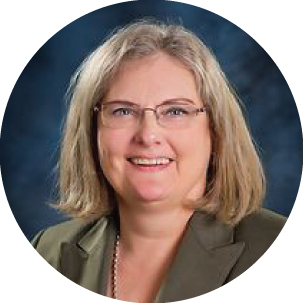Teenagers, Young Adults Lag Older Americans
Financial literacy remains below global averages among North Americans of all ages, but is the lowest among members of the youngest generations.
Members of Generation Z (ages 18-23) ranked the lowest of five generations studied, according to the 2021 TIAA Institute-GFLEC Personal Finance Index.
Two-thirds of Gen Z respondents answered 50% or fewer of the survey’s questions correctly, TIAA and GFLEC (the Global Financial Literacy Excellence Center) stated. While only 40% of baby boomers (ages 56-74) and the silent generation (75 and older) answered more than 50% correctly, their overall average of correct answers was 55. Averages for other groups were:
• Gen X (ages 40-55): 49%.
• Millennials (24-39: 48%.
• Gen Z: 43%.
TIAA and GFLEC added that numerous studies across all generations find that financial wellness is directly linked to financial literacy. The challenge is particularly troubling for younger people, as poor financial literacy at younger adulthood hampers the ability to grow wealth and achieve financial stability. “These findings indicate that individuals typically begin adulthood with low financial literacy,” TIAA-GFLEC stated. “While it increases over time, financial literacy nonetheless tends to remain low.”
Everyone needs good financial literacy because financial decisions are unavoidable for adults, according to Rashonner K. Lillie, CFP®, CRPC®, private wealth advisor and managing director at Reveal Wealth Strategies in Houston.
“Whether it’s buying a home or car, enrolling in an employer retirement plan, or managing debt, understanding the basics of finance is the foundation to building wealth responsibly,” Lillie said. “Education is one of the best assets we can obtain because it can be passed to the next generation and empower them to avoid financial mistakes and build wealth more efficiently.” Helen E. Graf, CFP®, CDFA®, president of Graf Financial LLC in Baton Rouge, Louisiana, noted that financial literacy is not typically taught in school, so most people have to learn about finances on their own. As economic conditions change, that lack of knowledge becomes more evident, particularly on such topics as healthcare and retirement funding.
Helen E. Graf, CFP®, CDFA®, president of Graf Financial LLC in Baton Rouge, Louisiana, noted that financial literacy is not typically taught in school, so most people have to learn about finances on their own. As economic conditions change, that lack of knowledge becomes more evident, particularly on such topics as healthcare and retirement funding.
“There has been a shift in the responsibility for retirement funding,” Graf said. “Defined benefit plans funded by employers have disappeared. Defined contribution plans, primarily funded by the employee, are now the source of retirement funding. Yet many people may not realize that their retirement is in their own hands.”
Homeownership is another example, Graf said. Previously, paying off your mortgage by the time you reached retirement has been a common goal. Factors driving that trend include public policies encouraging people to purchase homes and making credit more available to more people. However, she noted, easy access to credit has made home equity lines of credit easily accessible, which basically turns people’s home equity into credit cards.
Student debt is also a significant problem. Graf said that many positions that a college education prepares student for do not provide enough income to pay off the debt they incur obtaining their degrees.
“A secure financial future rests on making sound financial decisions, and on understanding the pros and cons of each decision and the results they have on your future,” Graf added.
Canadian Concerns
Young Canadians also face challenges with financial literary. The 2021 TD Financial Literacy Month survey by TD Bank Group found one third of Canadian parents believed they were not setting a healthy financial example for their children. The survey also found almost half of parents did not set a budget and only one-fourth provided their children with allowances – both important measures to help young people learn about finances.
“Setting a budget now can help set the stage for responsible financial behaviours in the future, TD stated, “especially for older teenagers who are looking to leave the nest and are taking on their own financial obligations like saving for post-secondary education or making their monthly cell phone or car payments. That way, before this age groups flies the coop, they will understand the benefits of putting in the effort to create a detailed budget.”
Rob Koski, vice president, Algar Virtue & Associates in Calgary, Alberta, agreed on the importance of a thorough financial education.
“Financial literacy is the best way for Canadians to protect themselves and to make decisions that are in their best interest,” Koski said. “Given the prevalence of financial problems faced by Canadians, it’s surprising that so little attention is paid to financial literacy in our education system. Financial education should start as early as possible. For older individuals, it is never too late to learn how to have a successful financial life.”
He said the basic concepts are not necessarily complex. Examples include:
• Pay attention to the risk associated with an investment as well as its expected return.
• Learn how taxes and inflation impact investment returns.
• Understand which financial advisors are fiduciaries and which are salespeople.
• Spend less than you earn.
• Understand compound interest and how you can take advantage of it.
• Gain knowledge on how investing differs from speculation.
“By understanding these few fundamentals,” Koski added, “an investor would create a strong base of financial knowledge.”
Financial Literacy for All
Financial literacy also presents challenges for African-Americans and other minorities in the United States, according to another GFLEC-TIAA Institute survey. The study noted that there are 44 million African-Americans in the United States who make up 13% of the total population and purchase $1.2 trillion annually in goods and services.
“Yet the financial well-being of African-Americans lags that of the U.S. population as a whole, and whites in particular,” the organizations stated. “The reasons for these gaps are complex, but one area of importance in addressing them is increased financial literacy. We find that there is a strong link between financial literacy and financial wellness among African-Americans.”
Lillie has also seen the benefits of better financial knowledge.
“From my experience as a person of color supporting many clients who are minorities in America, I've seen the tremendous power financial literacy has to change the wealth trajectory for many minority communities,” she added.
Many of these communities are vastly underserved when it comes to financial literacy, and that is one contributor to the challenging cycle of poverty. A critical part of my practice is helping clients create wealth and pass their wealth and financial knowledge to the next generation in a way that creates stability.”
Lillie added that learning good financial habits at a young age provides people more time to invest, boosting their ability to grow assets.
“Time is a valuable asset that can’t be replaced once lost,” Lillie said. “The earlier a person can learn and begin building wealth, the more they can benefit from investment growth.”





